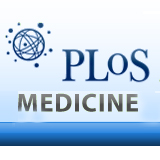
This essay is part of a PLoS Medicine series on maternal, neonatal, and child health in Africa. Read paper 1 and paper 2.
The previous papers in the PLoS Medicine series demonstrate that the technical basis for improving maternal, newborn, and child health (MNCH) in sub-Saharan Africa is largely known, but too often policy and practice are not well informed by science. There are two distinct aspects to this “gap.” First there is a “science to policy and practice” gap. Accumulated scientific research on the severity of MNCH problems and strategies to promote MNCH has, at least in part, failed to ensure that MNCH reaches the domestic policy agendas of African countries, and stays there. Furthermore, local, context-specific evidence frequently is not applied in planning and programming interventions to address MNCH. Second there is a “policy to practice” gap: even where clear policy commitments to MNCH are made, there may be substantial challenges to getting such policies implemented. These include challenges related to stakeholder management through the implementation process and challenges associated with the negotiation of health system constraints. Many African countries face weakened health systems characterized by human resource shortages, dysfunctional drug supply systems, decaying health infrastructure, and weak supervisory and governance mechanisms. Consequently, the global community is currently strongly focused on strengthening health systems so that they can provide adequate platforms for the delivery of a range of services, including MNCH.
Our discussion focuses on the “science to policy and practice” gap, in the belief that action to address the second gap is already mobilized, although clearly not yet fully effective. In contrast, the first gap remains neglected. This article first addresses what is already known about how scientific evidence has influenced MNCH policy and practice, then it considers some of the key challenges in closing the science to policy and practice gap, and concludes by identifying promising paths for future action.